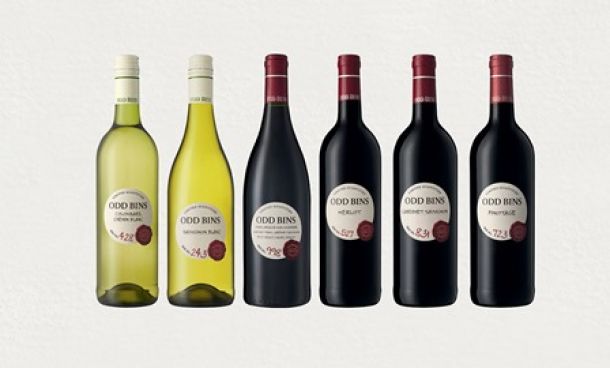When to expect a move to lockdown level 1 in South Africa
Professional services firm PwC has published its latest economic outlook, including forecast scenarios for South Africa’s lockdown levels and their likely impact on the economy.

Staff Writer | Business Tech
The report, published a week after the country moved to an adjusted level 2 lockdown, focuses on both upside and downside scenarios and includes a baseline assumption.
On Sunday, 12 September, president Cyril Ramaphosa put South Africa into lockdown level 2 and said the restrictions would be reviewed before the end of the month.
PwC said that it now expects a move to level 1 lockdown from the start of October.
“The severity of the elongated mid-year wave, and the accompanying strictness of associated lockdowns, is a key driver behind the nature of the economic recovery, alongside the impact of electricity load-shedding,” the group said.
“All our scenarios take into account a likely fourth wave of infections – with varying severity, depending on the scenario – during the summer holidays.”
Minister of health Joe Phaahla recently warned he is expecting a fourth wave to materialise in November. He expressed concern with the long tail of the third wave and the risk that South Africa could move from the current wave straight into another wave over the summer.
Baseline scenario
- Level 2 lockdown to be in place for the rest of September as Covid-19 numbers improve.
- Level 1 is re-introduced in October as the third wave infections taper out, continued through October and November.
- Level 3 lite lockdown in December as infections start to rise, starting the fourth wave.
Downside scenario
- Level 2 lockdown to be in place for the rest of September as Covid-19 numbers improve, with this remaining in place for both October and November.
- Level 3 lite lockdown in December as infections start to rise, starting the fourth wave.
Upside scenario
- Level 2 lockdown to be in place for the rest of September as Covid-19 numbers improve.
- Level 1 in October as the third wave infections taper out, continued through October and November.
- Level 2 re-introduced in December as a precautionary move to delay the fourth wave.
 https://businesstech.co.za/news/wp-content/uploads/2021/09/PwC-2-211x300.png 211w" alt="" width="502" height="714" class="size-full wp-image-522598 aligncenter lazyloaded" style="border: 0px; vertical-align: middle; max-width: 100%; transition: opacity 0.3s ease 0s; clear: both; opacity: 1; height: auto; margin: 0px auto; display: block; backface-visibility: hidden;" data-aspectratio="502/714" data-src="https://businesstech.co.za/news/wp-content/uploads/2021/09/PwC-2.png" data-srcset="https://businesstech.co.za/news/wp-content/uploads/2021/09/PwC-2.png 502w, https://businesstech.co.za/news/wp-content/uploads/2021/09/PwC-2-211x300.png 211w" />
https://businesstech.co.za/news/wp-content/uploads/2021/09/PwC-2-211x300.png 211w" alt="" width="502" height="714" class="size-full wp-image-522598 aligncenter lazyloaded" style="border: 0px; vertical-align: middle; max-width: 100%; transition: opacity 0.3s ease 0s; clear: both; opacity: 1; height: auto; margin: 0px auto; display: block; backface-visibility: hidden;" data-aspectratio="502/714" data-src="https://businesstech.co.za/news/wp-content/uploads/2021/09/PwC-2.png" data-srcset="https://businesstech.co.za/news/wp-content/uploads/2021/09/PwC-2.png 502w, https://businesstech.co.za/news/wp-content/uploads/2021/09/PwC-2-211x300.png 211w" />
PwC’s baseline forecast is for GDP growth of 3% in 2021. This is better than an estimate of 2.5% published in August after it took into account the impact of rebased historical GDP data and the move to level 2 lockdown on 12 September.
“Nonetheless, our forecast for this year remains conservative compared to many of the projections out there,” the group said. “As such, under the baseline outlook, it will take three years (from 2020) for real GDP to return to pre-pandemic levels.
“If electricity load-shedding and lockdown restrictions are both lower than currently expected, the economy could still grow by up to 4.5% under our upside scenario. Within this scenario, the GDP recovery will take two years.”
News Category
- International retailers
- On the move
- Awards and achievements
- Legislation
- Wine and liquor
- Africa
- Going green
- Supplier news
- Research tools
- Retailer trading results
- Supply chain
- Innovation and technology
- Economic factors
- Crime and security
- Store Openings
- Marketing and Promotions
- Social Responsibility
- Brand Press Office
Related Articles

Makro secures exclusive rights to SA’s most sou...

Checkers adds 41 new wines to Odd Bins range

With petrol at almost R20 a litre, food prices ...

Petrol price shocker for South Africa


